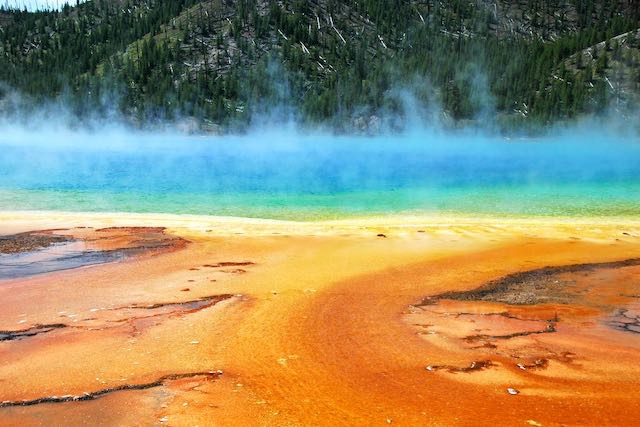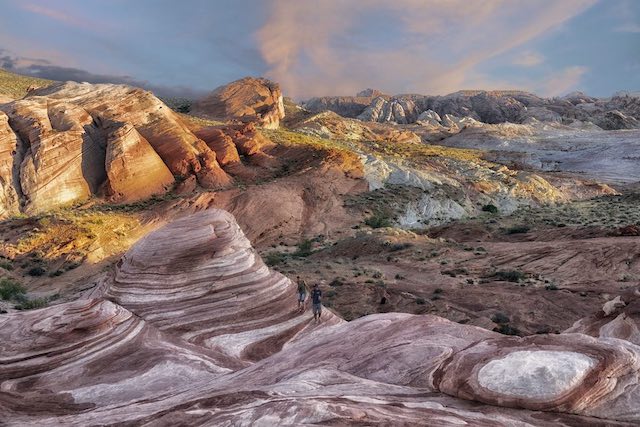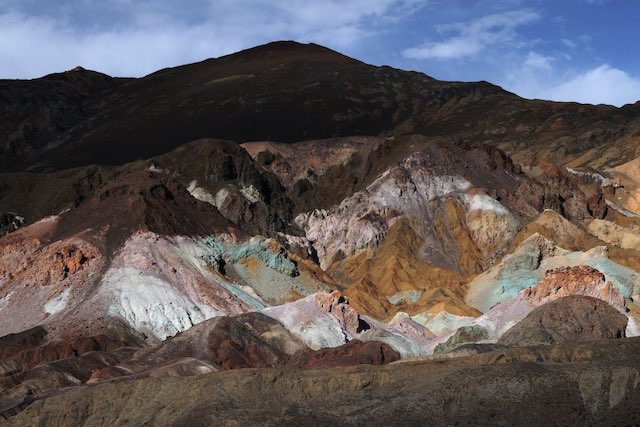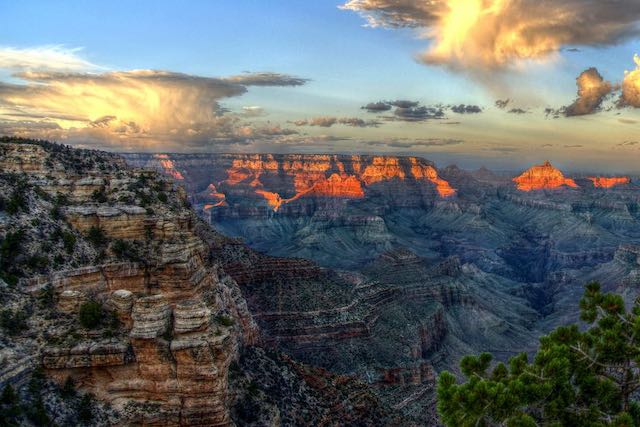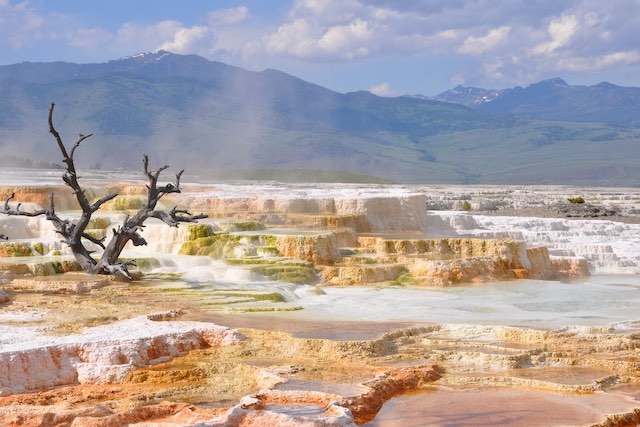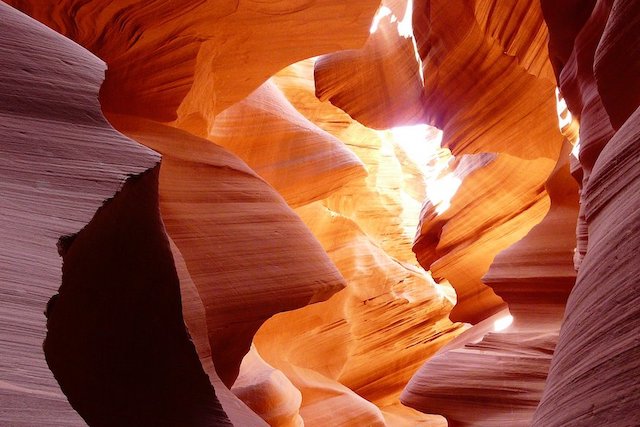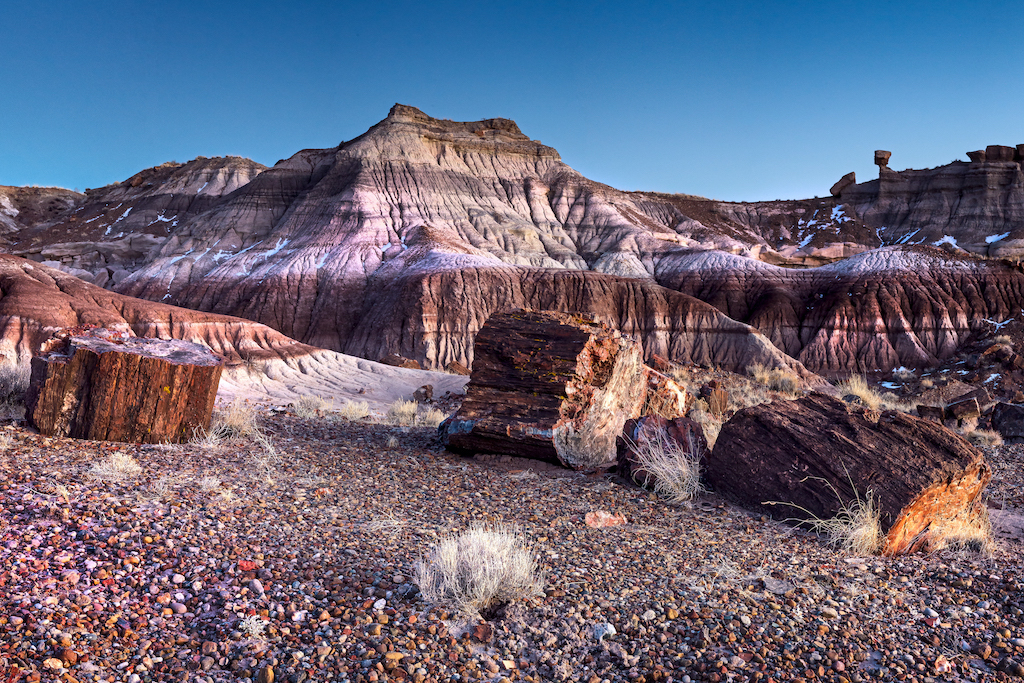
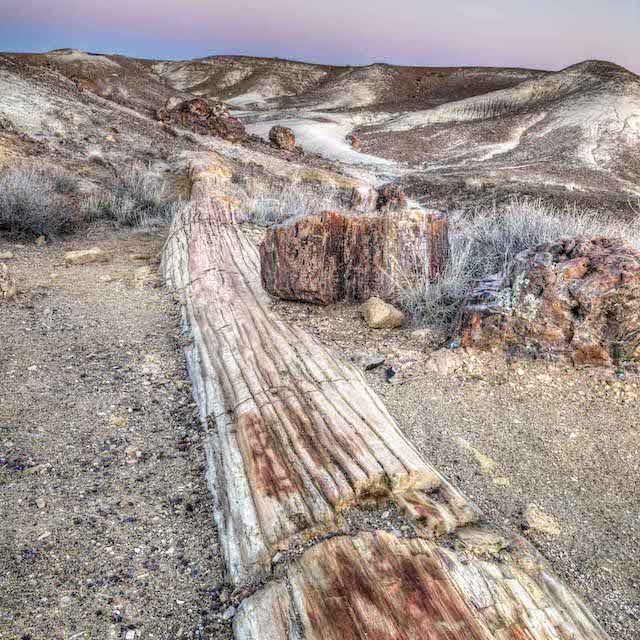
A huge tree buried in volcanic ash became a colorful jasper
A huge tree lying in a desolate rocky desert. At first glance, it looks like a tree, but upon closer inspection, it is a rock. A rock in the shape of a tree.
In Fossil Forest National Park in Arizona, USA, tree fossils like the one in the photo lie here and there. These fossils, called silicified trees, are the result of trees in ancient forests that were swept away by floods, buried in volcanic ash sand, and replaced by silicon dioxide, a wood component.
The silicified wood here was not only replaced by silicon dioxide, but also incorporated iron and manganese from the volcanic ash sand to form colorful jasper. Jasper is a type of gemstone, a member of the agate, opal, and quartz family. That is why the Fossil Forest National Park is also known as the “Rainbow Forest” or “Crystal Forest.
Let’s take a look at the actual cross-section. They are colored red and yellow and are very beautiful.
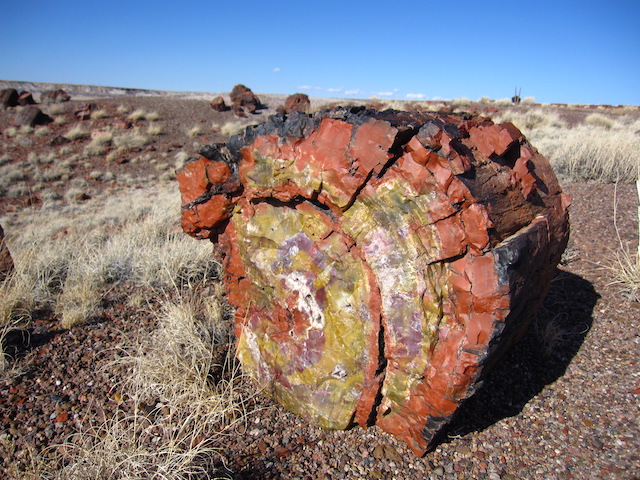
Silicon dioxide itself is a component of quartz, so it is colorless and transparent, but as mentioned above, impurities such as iron and manganese have been incorporated to give it this brilliant color. The fiery red color is particularly beautiful, and this red is the color of iron oxide. Silicified wood can be found in many parts of the world, but there is no other place in the world where silicified wood with such rich colors can be found.
Both jasper and agate are a collection of minute crystals
It may have been a little complicated with so many mineral names, such as jasper, agate, and quartz. Jasper is a mineral composed mainly of silicon dioxide and has several very similar companions. For example, agate, opal, and chalcedony.
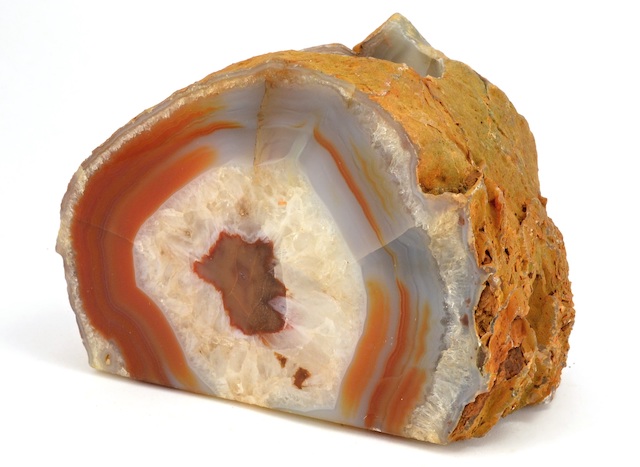
All of these minerals are composed of microscopic crystals and are basically called by different names depending on their coloration. Jasper is characterized by being darker in color and more opaque than agate or chalcedony. Also, as is well known, opals have a unique rainbow color.
In fact, glass, which we are all familiar with, is also made of silicon dioxide like these. Glass is certainly transparent and beautiful, but it seems to be different from gemstones such as jasper and crystal, doesn’t it? It may have been a bit surprising to hear that they are made of the same ingredient.
The difference is that in the case of glass, the silicon dioxide molecules are not arranged in an orderly fashion and are not crystallized. In other words, if we organize it in terms of crystals, it is as follows.
- Jasper, agate, opal, chalcedony: a collection of minute silicon dioxide crystals
- Quartz: large grown silicon dioxide crystals
- Glass: non-crystallized silicon dioxide
Silicon dioxide has a variety of forms depending on the crystallization method and impurities contained in it.
Fossil forests were originally tropical forests
By the way, if you look at the picture of Fossil Forest National Park at the beginning of this article, the whole area is a desolate rocky desert that does not look very much like a “forest. The number of silicified trees lying on the ground is also too small to be called a forest.
However, it is said that there used to be a tropical forest in this area when the floods carried away the huge trees that were the source of silicified trees. That was about 225 million years ago.
The continent was in a different location than it is today, and this area, including Arizona, belonged to a tropical region with wet and dry seasons. Many of the silicified trees in Fossil Forest National Park have been found in a fallen state, so it is thought that they were transported from other places by floods during the wet season.
Of course, this does not mean that there were no trees in this area at all. In fact, some silicified trees were found in the form of stumps, so it is likely that some trees grew here. But most of them were brought in from other places.
The trees carried by the flood accumulated in the river channel, which is the water flow path. The river channel was inundated with sand, which contains a lot of volcanic ash, this time from another place. The area had apparently experienced periodic burial by volcanic ash-laden sediment, as there was a volcano to the west, albeit at a distance.
Thus, trees buried in volcanic ash sediment were isolated underground without rotting. Then, water seeping from the surface of the earth dissolved silicon dioxide, a component of volcanic ash, and the fresh trees were transformed into silicified wood through continuous immersion in the water.
Over the years, soil erosion on the surface of the earth revealed silicified trees that had been buried underground, and the current Fossil Forest National Park emerged. However, only a small portion of the silicified trees have surfaced, and it is estimated that many more are buried at depths of up to 90 meters below the surface of the park.
The reason why there are not so many silicified trees in the Fossil Forest National Park can be called a “forest” is because many trees are buried underground.
The original silicified tree is a species of cedar called Araucaria, which is found in the tropics and temperate zones.
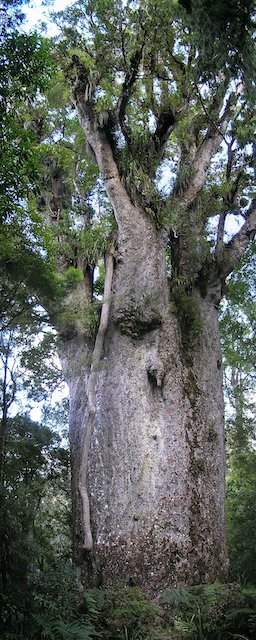
This species has become extinct in the Northern Hemisphere, but is still found in some areas of the Southern Hemisphere (Southeast Asia, Australia, Central and South America, etc.) The Araucaria itself is a living fossil, as the same trees that were in the forests over 200 million years ago are still surviving today.

